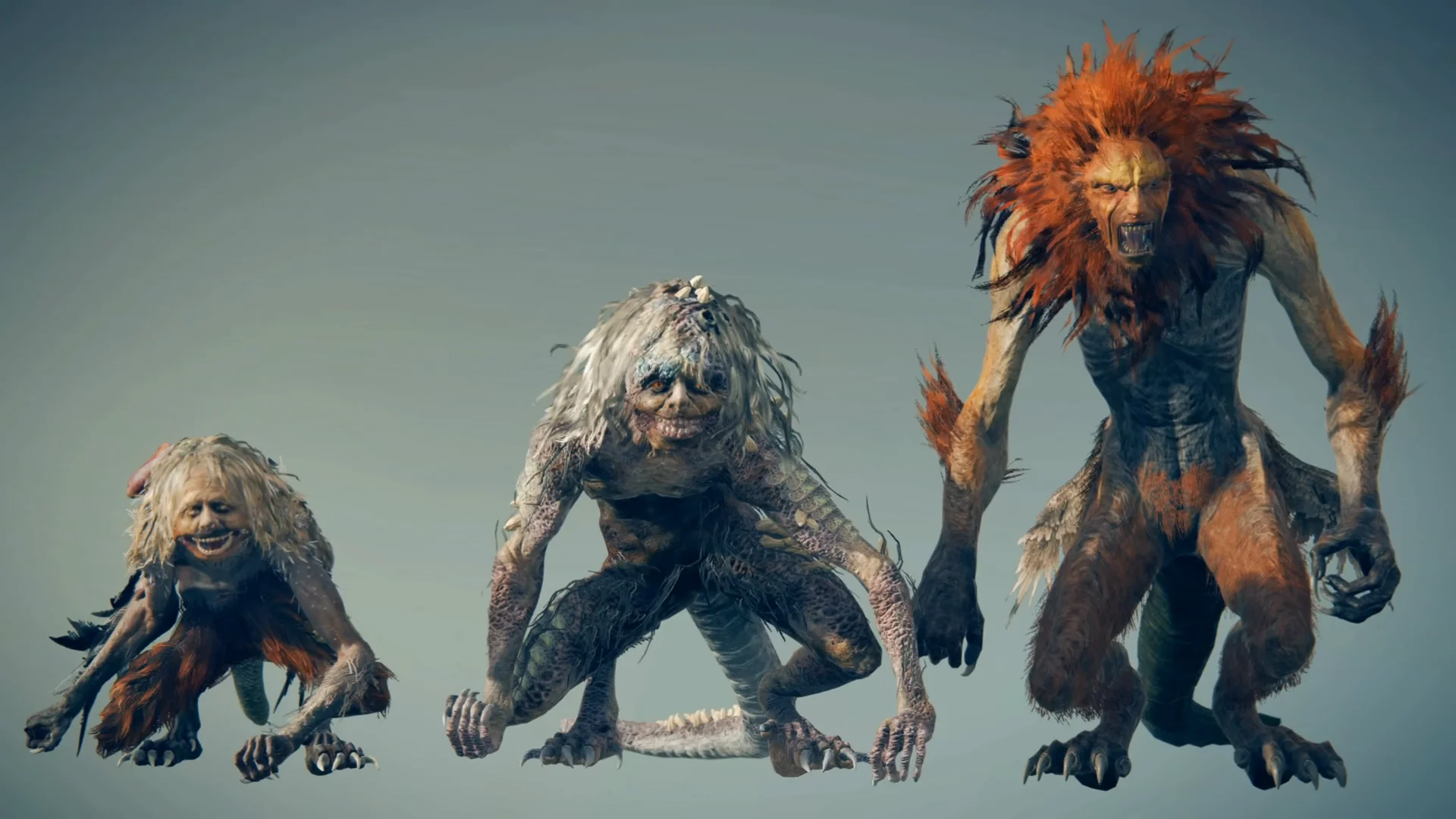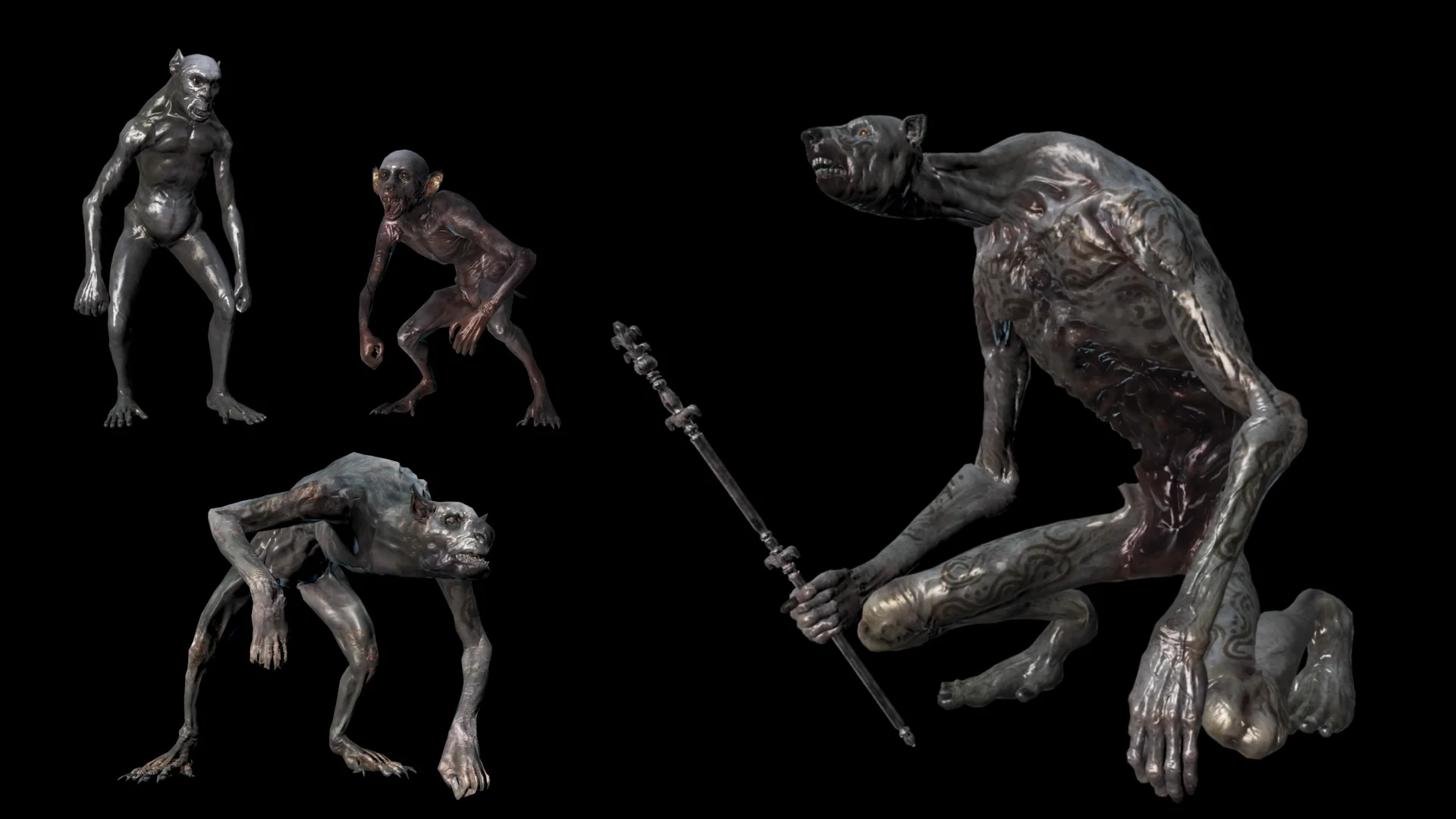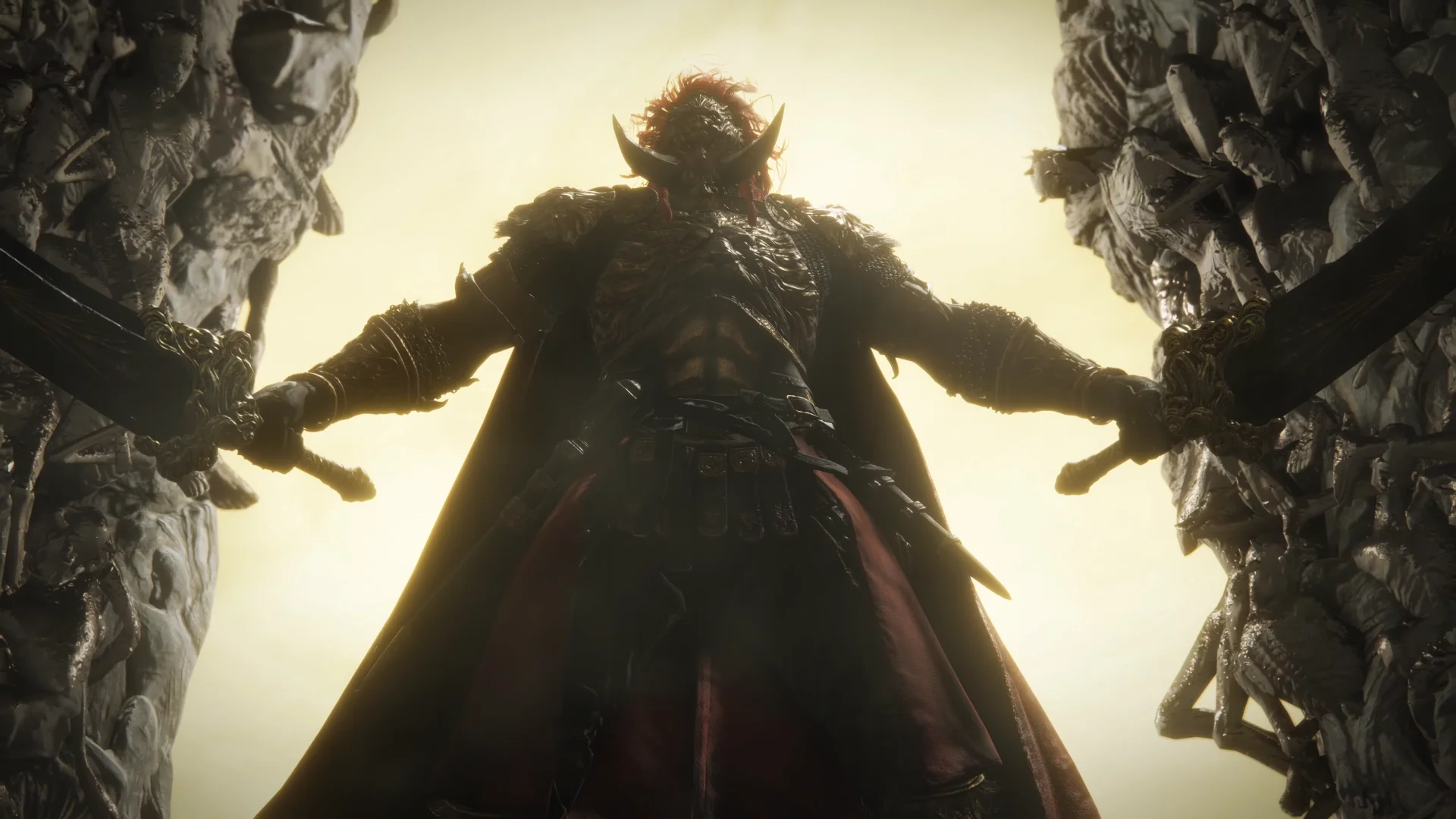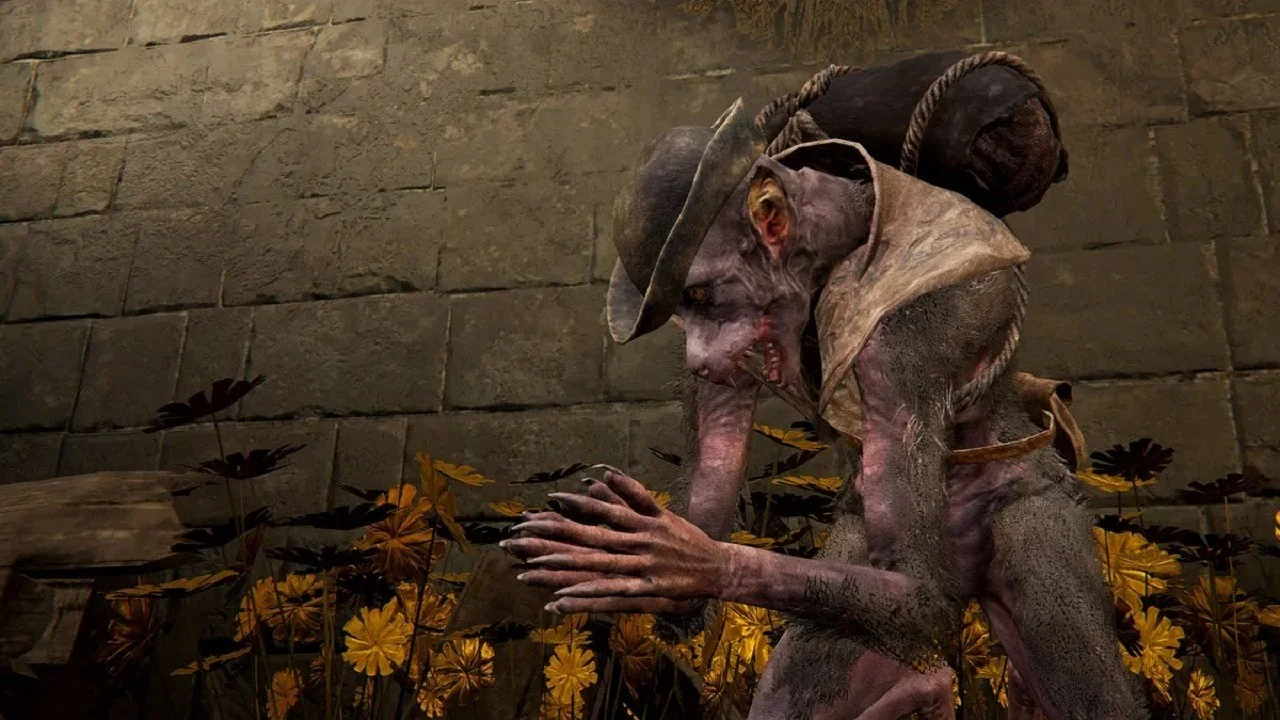· Elden Ring · 10 min read
Castle Morne Lore: A Legacy of Rebellion, Mystery, and the Golden Order's Influence
A testament to the turbulent history of the Lands Between, Castle Morne have witnessed the rise and fall of dynasties, serving as a focal point for rebellion, vengeance, and the relentless pursuit of power.
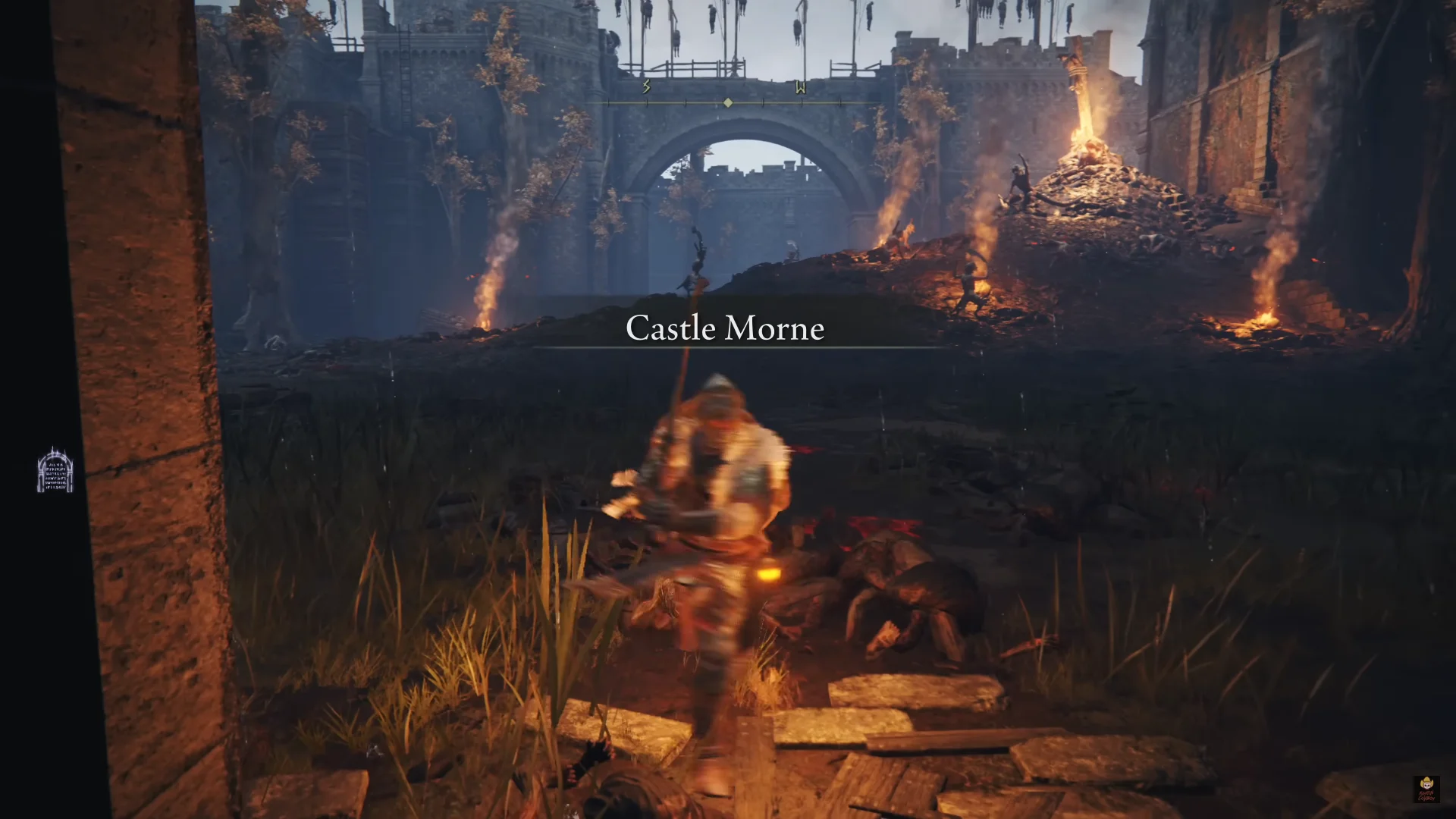
As a strategic stronghold of the Golden Order, Castle Morne has been a battleground for ideologies and the backdrop to the tale of an unnamed hero. This article explores the lore surrounding Castle Morne, examining its architectural influences, the symbolism of the Grafted Blade Greatsword, and the enduring spirit of resistance embodied by the Misbegotten rebellion.
Castle Morne Lore and History
Castle Morne stands as a sentinel on the Weeping Peninsula, steeped in the lore and history of the Lands Between. Its origins remain mysterious, but its strategic location underscores its role as a defensive stronghold, reflecting eras of conquest and rebellion. The architecture of Castle Morne resembles other Golden Order fortresses, but it bears unique scars from the varied peoples who have passed through its gates. This fortress, though seemingly isolated, was once crucial in the broader geopolitical landscape of the Elden Ring narrative.
The castle’s history is deeply tied to the rise and fall of dynasties, echoing themes of rebellion and vengeance in the Lands Between. It has witnessed uprisings and the clash of ideologies, as evidenced by the Sword Monument commemorating the siege of Castle Morne, where a lone hero sought vengeance against Lord Godfrey’s forces. This hero’s story, though largely forgotten, symbolizes the enduring struggle against oppression. Castle Morne’s towering walls and imposing battlements reflect the fortitude of its defenders and the relentless determination of those who sought to claim it. As the story of the Lands Between unfolds, Castle Morne serves as a poignant reminder of the conflicts and aspirations that have shaped this world.
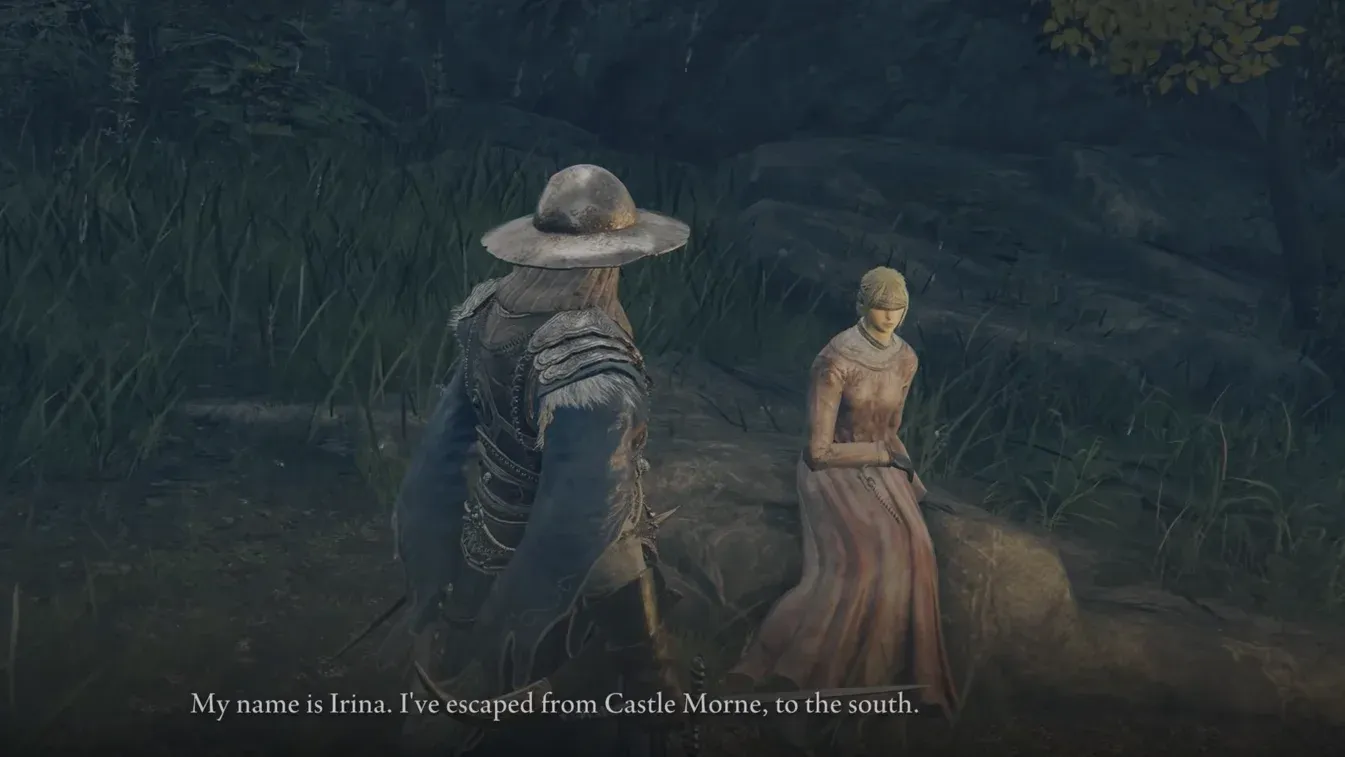
The Mystery of the Unnamed Hero of Castle Morne
The unnamed hero of Castle Morne stands as a compelling figure in TLB’s history. His story, a blend of vengeance and tragedy, is deeply embedded in the castle’s lore. A sword monument commemorates his valiant yet doomed stand against Lord Godfrey. The Grafted Blade Greatsword, a weapon filled with anger and regret, serves as a key artifact in understanding this mystery. It suggests that this hero was the last champion of a vanished country, driven by the loss of his clan to forge the swords of his enemies into a singular, formidable weapon. This act of defiance, so significant that it required Godfrey’s intervention, hints at a deeper story of rebellion against the oppressive forces of the Golden Order.
Theories abound regarding the identity of this lone hero. Some suggest a connection to Hewg, the laborer and misbegotten smith, whose rebellion aligns with the uprising at Castle Morne. Others speculate a link to Radagon, based on shared motifs and the presence of Radagon’s Scarseal in the Weeping Peninsula. The environmental storytelling within the game, including the repeated theme of rebellion and the depiction of Serosh on the Grafted Blade Greatsword, further enriches these theories. It is clear that this hero’s story is not just a footnote in history but a crucial element echoing the struggles of the oppressed, perhaps mirroring the current plight of the Misbegotten at Castle Morne.
The Role of Godfrey in the Siege of Castle Morne
Godfrey played a crucial role in the siege of Castle Morne, a key event in the history of The Lands Between. This moment reflects his broader story as Elden Lord and his complex relationship with the Golden Order. Renowned for his formidable battle prowess, Godfrey was central to the Golden Order’s efforts to assimilate lands and peoples under its rule. The siege of Castle Morne, marked by the defiance of a lone hero, underscores Godfrey’s relentless pursuit of consolidation and control. His motivation extended beyond mere conquest; he aimed to establish a unified realm under Marika’s divine mandate, showing his unwavering loyalty to the Golden Order.
Godfrey’s intervention at Castle Morne had a profound impact. Despite the hero’s valiant resistance, Godfrey’s presence signaled inevitable defeat for those opposing the Order. This event highlights Godfrey as both a unifier and a conqueror, embodying the duality of his mission. The siege illustrates the lengths he would go to suppress rebellion and ensure the Order’s supremacy. It also foreshadows the eventual fracturing of his relationship with the Golden Order, as the brutal measures employed in such conflicts may have led to the loss of his Grace and the rise of dissent within The Lands Between.
The Relationship Between the Misbegotten and Castle Morne
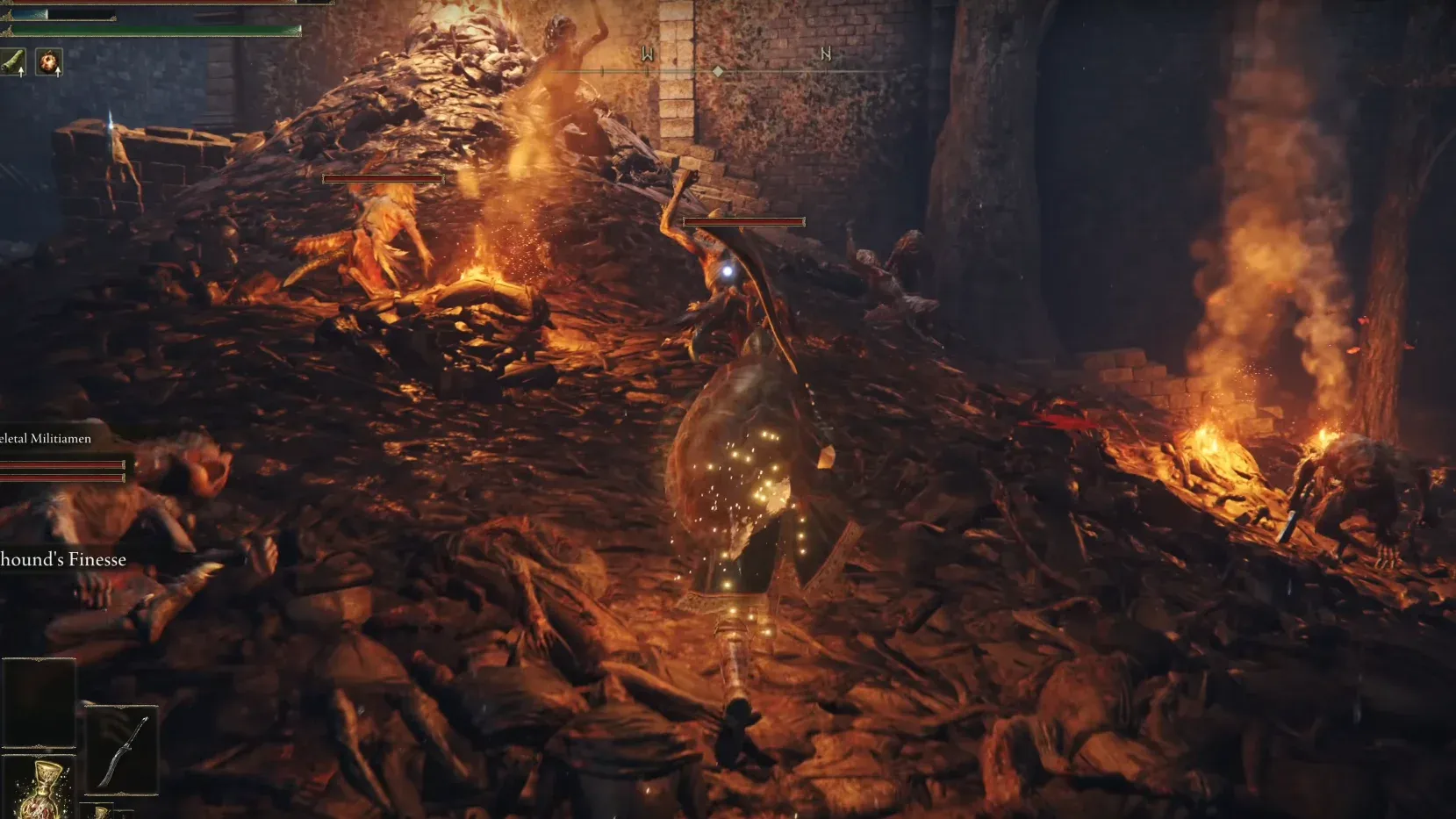
The Misbegotten’s relationship with Castle Morne centers on themes of oppression and resistance, reflecting broader themes within the game’s world. Historically, the Misbegotten, often linked with the crucible, have faced subjugation and enslavement under human regimes, including the oppressive Golden Order. Castle Morne, once a stronghold of the Golden Order, became a site of their subjugation and defiance. The Misbegotten’s rebellion at Castle Morne represents a significant uprising against their human overlords, mirroring the struggles of a people yearning for freedom from bondage.
This rebellion, driven by the Misbegotten’s desire for vengeance, illustrates their fight against systemic injustices. Their presence in Castle Morne and the subsequent uprising highlight a history of exploitation and maltreatment, which ultimately sparked their revolt. The rebellion is not just a localized skirmish but a reflection of the broader theme of resistance against oppressive structures within the game’s universe. The Misbegotten’s uprising at Castle Morne stands as proof of their enduring spirit, challenging the status quo and seeking to reclaim their agency in a world that has consistently marginalized them.
The Grafted Blade Greatsword and Its Symbolism
The Grafted Blade Greatsword stands as a powerful symbol of vengeance and rebellion within the lore of Castle Morne. Described as a “revenger’s weapon, burdened with oceans of anger and regret,” it captures the emotional weight carried by the unnamed hero who wielded it. This storied sword, crafted from the blades of an entire clan, embodies the hero’s indomitable will to avenge his people—a lone surviving champion from a now-vanished country. The weapon’s design, a chaotic spiral of blades, reflects both the crucible’s transformative power and the divine spiral imagery revered by the Hornsent, highlighting its thematic significance.
For the Misbegotten, the Grafted Blade Greatsword represents a legacy of rebellion against the oppressive structures of the Golden Order, echoing their current uprising within Castle Morne. The sword’s presence on the battlefield, wielded by a flaming red-haired Misbegotten amidst a mound of graves, serves as an echo of the unnamed hero’s defiance. It symbolizes the cyclical nature of resistance, where those deemed lesser by the prevailing order rise against their oppressors.
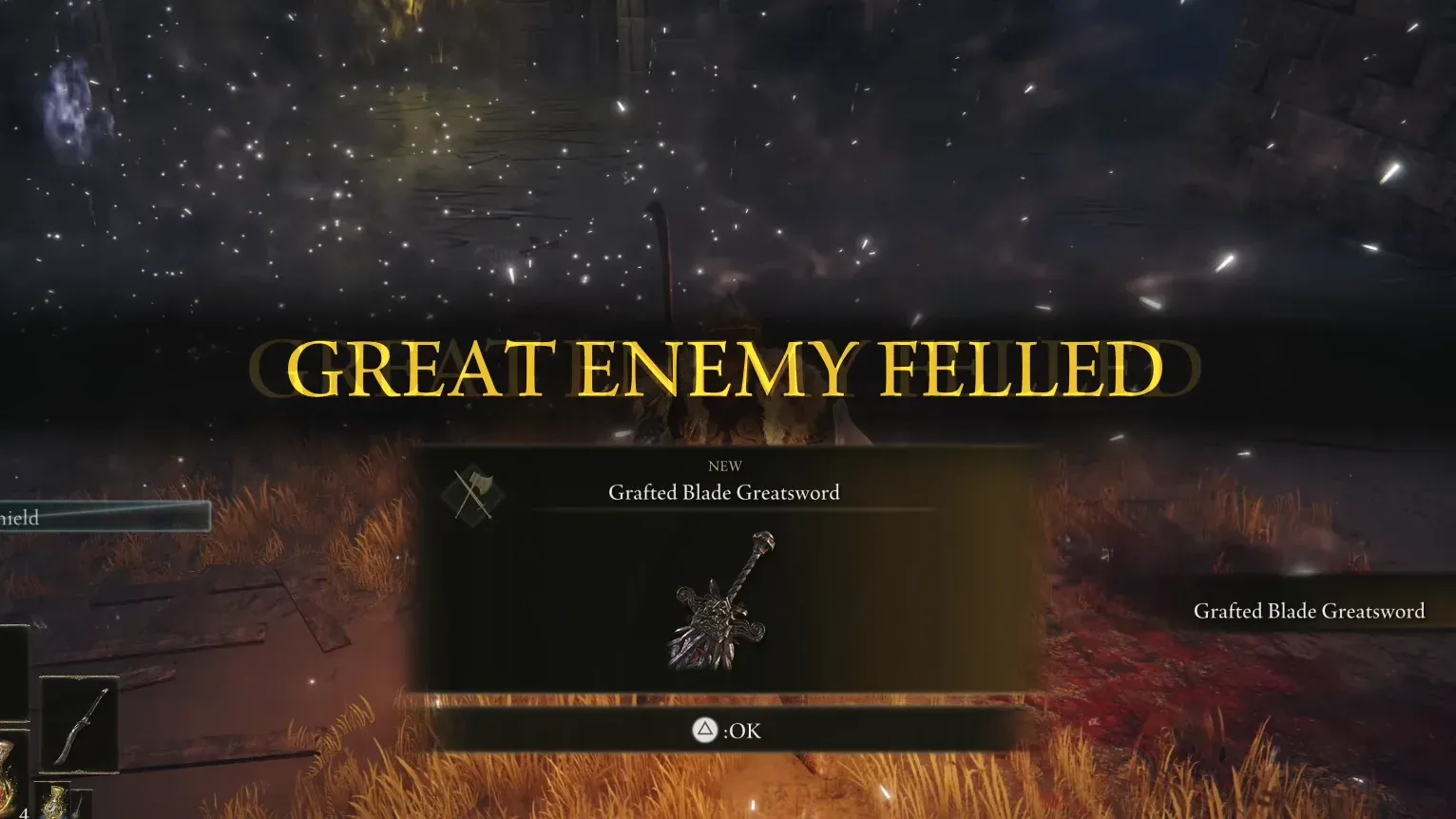
This theme not only ties the weapon to the past struggles of the Misbegotten but also reinforces the broader idea of dynastic rise and fall, where the profane can challenge the sanctified. The Grafted Blade Greatsword becomes a powerful testament to the enduring spirit of those who resist subjugation, both in history and the present conflict within Castle Morne.
The Architectural Influence of the Golden Order on Castle Morne
Castle Morne demonstrates the Golden Order’s architectural influence, reflecting design choices, materials, and motifs that align with their aesthetic. Its architecture features an imposing structure similar to other Golden Order strongholds, blending grandeur and functionality. The use of stone and iron, materials associated with strength and permanence, underscores the Order’s ethos of unwavering dominance and control. The castle’s towering battlements and fortified walls represent the Order’s desire to project power and maintain their grip over the lands.
Motifs within Castle Morne further highlight the Golden Order’s influence, with detailed carvings and symbols echoing the Cornucopian iconography found in Age-of-Plenty structures. These embellishments, along with spiral designs seen in other Golden Order buildings, visually narrate the Order’s divine mandate and their role as arbiters of the realm’s destiny. This architectural style reinforces the Order’s cultural dominance and places Castle Morne within a broader story of conquest and subjugation. The castle’s design is not just a backdrop but an active participant in the unfolding story of dynastic rise and fall, encapsulating the Golden Order’s enduring legacy and its impact on the world of Elden Ring.
The Potential Hornsent Connection in the DLC
In light of the DLC, the connections between Castle Morne and the Hornsent provoke intriguing speculation. The lore surrounding the Hornsent, their persecution, and their sealing away in the Land of Shadow, resonates with the themes of vengeance and uprising witnessed at Castle Morne. The Grafted Blade Greatsword, with its spiral hilt, suggests a divine connection to the Hornsent, who hold spiral imagery sacred. This connection is further reinforced by the Oath of Vengeance skill, which implies a vow to avenge a fallen clan—a theme echoed in the Hornsent’s story of clan suffering and redemption.
The misbegotten’s presence at Castle Morne and the hero’s quest for vengeance reflect the Hornsent’s struggle against oppression. While the architectural elements of the castle align more closely with the Golden Order, the thematic parallels cannot be ignored. The hero’s use of the Grafted Blade Greatsword, composed of the swords of an entire clan, may symbolize the Hornsent’s resilience, suggesting that their story intertwines with the castle’s history. This intersection of stories highlights the broader themes of rebellion and the cyclical nature of oppression and resistance, providing a deeper understanding of the game’s complex lore.
Theories on the Misbegotten Rebellion and Its Aftermath
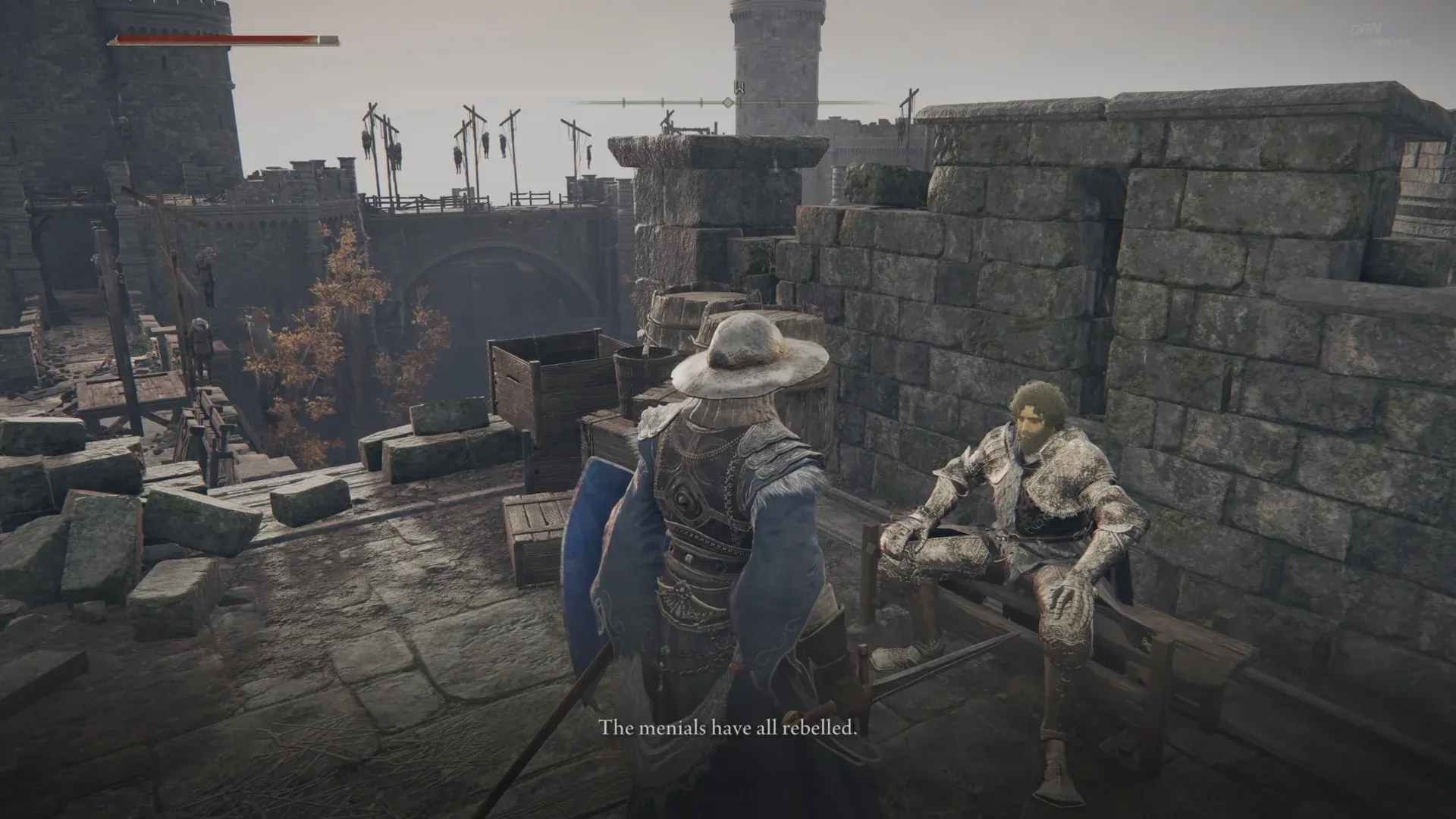
The Misbegotten rebellion at Castle Morne highlights the tensions between oppressed groups and the ruling Golden Order. A lone hero, whose identity remains a mystery, led this fierce uprising, which eventually required the intervention of Lord Godfrey. The rebellion left Castle Morne in ruins, with its inhabitants either slaughtered or scattered. The Misbegotten, once subjugated, showed their capacity for resistance and hunger for vengeance, themes that resonate deeply within the larger story of Elden Ring. This uprising might signal the start of a broader awakening among oppressed groups, potentially sparking further rebellions across the realm.
The impact of the Misbegotten rebellion goes beyond the physical destruction of Castle Morne. It challenges the legitimacy of the Golden Order’s rule and highlights the fragility of power built on subjugation. Although the rebellion failed with the fall of its heroic leader, it underscores the harsh reality of resisting overwhelming forces. However, it also plants seeds of hope and defiance, suggesting that future attempts might succeed or inspire others to rise. The rebellion’s legacy might influence the game’s world by shifting power dynamics, fostering alliances among marginalized groups, or even instigating a larger conflict that could redefine the existing order. In the context of Elden Ring’s themes of power and resistance, the Misbegotten rebellion serves as a poignant reminder of the cyclical nature of history, where the oppressed continuously strive to overturn their oppressors, regardless of the odds against them.
Conclusion
The story of Castle Morne is one of resilience and defiance, echoing throughout the history of the Lands Between. From the unnamed hero to the Misbegotten’s uprising, each chapter adds depth to the narrative of power struggles and rebellion against the Golden Order. As the legacy of Castle Morne unfolds, it serves as a poignant reminder of the enduring spirit of those who challenge oppression. The cyclical nature of history ensures that themes of vengeance, resistance, and the quest for freedom remain relevant, shaping the ongoing saga of the Elden Ring universe.
